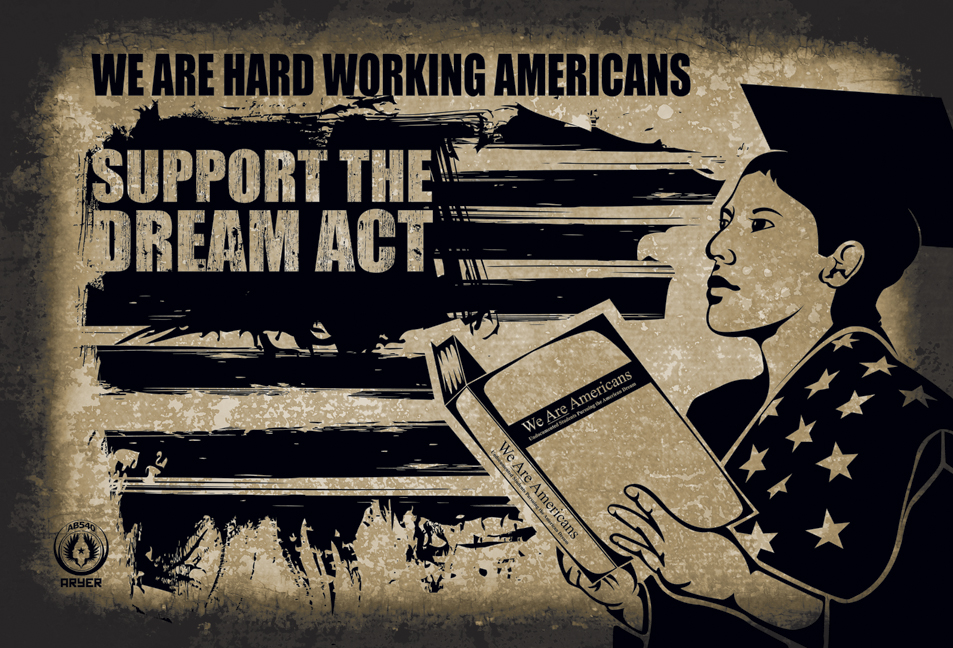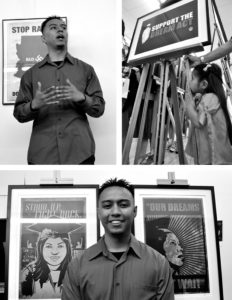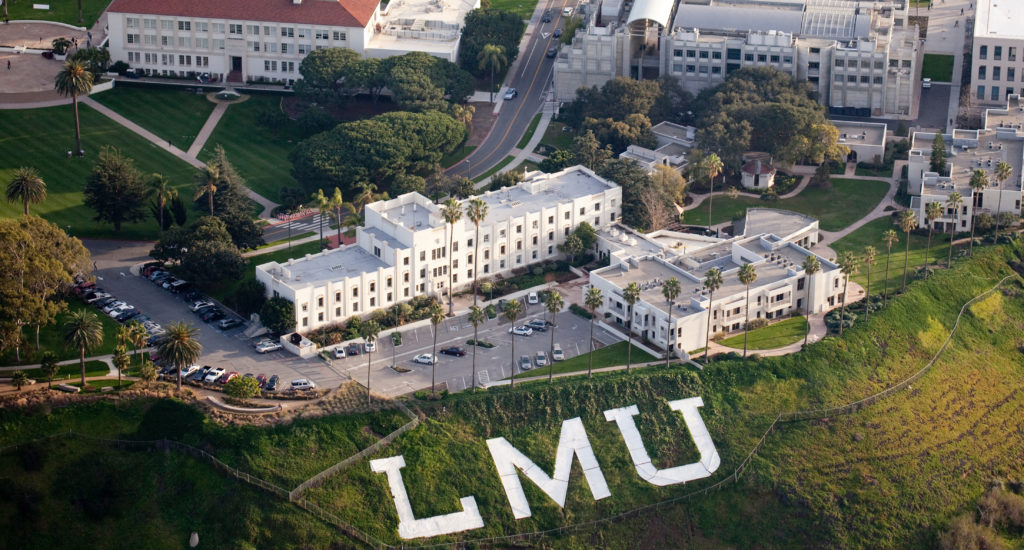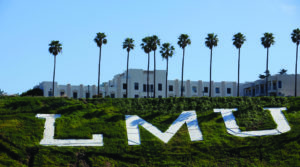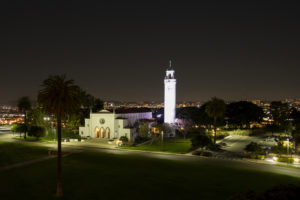By William Perez, Ph.D.
Professor and Associate Dean for Diversity, Equity, and Inclusion
LMU School of Education
In last week’s kickoff of Latina/o/x Heritage Month Professor Eliza Rodriguez Y Gibson underscored the prominent role of artivism in the history of Latina/o/x communities in the U.S. This week, in recognition of the important contributions of the 31 percent of LMU staff that identify as Latinx, I will highlight how art and artivism shaped the personal and professional trajectory of LMU graphic designer Raymundo “Ray” Hernandez-Lopez. He is the creative genius behind the graphic and visual material for last year’s Day of Giving that raised over $2.4 million dollars, the commencement ceremony at Sofi Stadium, and he created a series of design templates for use in the LMU community to promote health and safety guidelines during the pandemic.
Ray was born in Mexico City. As a kid, he liked to draw cartoons. When his family immigrated to the U.S. and settled in Santa Monica, California, he used drawings to communicate with his predominantly white classmates because he couldn’t speak English. Over time, he realized that art can not only serve to communicate, but also to teach, to inform, and to ignite social change.
Growing up in an undocumented, low-income household, Ray did not have access to art lessons, books, or supplies. He said, “artistically, the only thing that I could get my hands on was the lowrider art magazines. Seeing what those artists were doing at the time, how they connected art to history and culture, it really inspired me.” As Ray continued to hone his artistic talents, he struggled to figure out how to put them to use. He experienced a turning point in high school while on a job cleaning pools: One of his regular customers was a photographer and one day he approached him to ask what he planned to do with his life.
Ray recalled, “I just gave him an empty look. He said, ‘Whatever you do, make sure that you use your talents and do that for the rest of your life.’ It just clicked. That’s when I decided to take a graphic design class at West L.A. College to start my career. As soon as I got a hold of a Mac computer, Photoshop, and Illustrator I was like, ‘this is it, this is what I want to do.’ This is how I can connect my artistic skills with something that can help me provide for myself and do what I love.”
Ray went on to earn a B.A. in graphic design and an M.A. in Chicana and Chicano Studies at California State University, Northridge. It was during this time that he experienced his next stage of evolution as an artivist, an artist who uses their talents in the struggle against injustice and for societal change.
Ray was involved in MEChA as early as middle school and continued through high school and college. He said, “I was very politically conscious because growing up as an immigrant I felt like I had to be an activist. I had a passion for history, activism and for arts, but I didn’t know how to connect everything together.” The pursuit of a master’s degree and his involvement in the undocumented student group, Dream to be Heard, brought the clarity he sought. In his graduate studies he learned about Emory Douglas, the visual architect of the Black Panther Party in the 1960s.
Ray explained, “He was the genius that created the posters for the Black Panther Party … those artists during that time, they reflected the movement, they empower the movement, so it helped me realize that movements need artists. Through art you move people, you inspire people, inform people, and that’s what those artivists during the 60s did. They created work to empower and to give voice to the voiceless.”
While Ray was learning about the Black and Chicanx artivists of the 1960s he was also becoming increasingly involved with the Dreamer Activist movement. Learning from history, he decided to contribute to the movement through the visual imagery of his artwork. He co-founded im:arte, a collective of undocumented and immigrant student artivists. He explained, “As a collective we wanted to create artwork that would get people to talk about the issue and start the conversation.” The name was a linguistic invention that reflected the artivists’ bilingual and bicultural sensibilities. It’s a Spanglish phrase that means both, “I am art, I love art.” The collective used all proceeds from their art shows to create a scholarship for undocumented students.
After college, Ray wanted to pursue a career as a graphic designer at an institution of higher education. He explained, “I always wanted to be connected to institutions that make a difference in people’s lives and that’s higher education to me because that’s what changed my life for the better.” Growing up in West L.A., he often wondered what it would be like to be part of LMU. He said, “As a little kid I remember thinking, ‘Wow, I hope one day I can go to that college,’ so when I saw an opening I applied right away.” As a designer at LMU, Ray continues to draw on his artivist roots.
He explained, “My artivism was student driven. I’m always thinking about how to motivate or inspire students, that was the purpose of my artwork during the dream movement, and I feel like I’m applying the same thought process in my daily work now, especially with Day of Giving. I’m thinking about how I can create those impactful images or designs.”
I first met Ray 11 years ago when he sent me a copy of a poster he designed that had an image of a young woman reading a copy of my first book, “We Are Americans: Undocumented Students Pursuing the American Dream.” It was humbling to see a reference to my scholarly work in Ray’s powerful image. For the next several years we worked alongside as compañeros in the struggle for undocumented student access to education and the Dream Act. In recognition of Ray’s commitment to our institutional ideals of social justice, it is an honor and a privilege to share the story of a member of the LMU Latinx staff that represents lo mejor de lo nuestro.
DEI BUZZ
